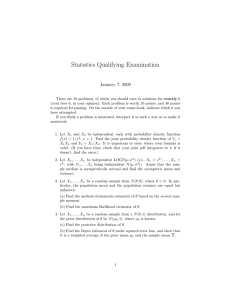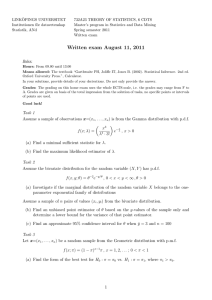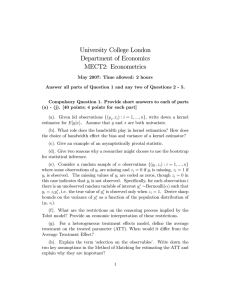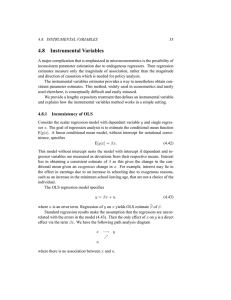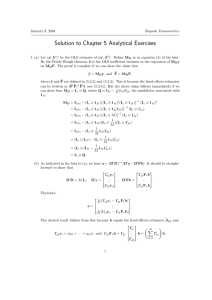MECT2 2009: RICHARD BLUNDELL TUTORIAL SHEET 2 = x
advertisement
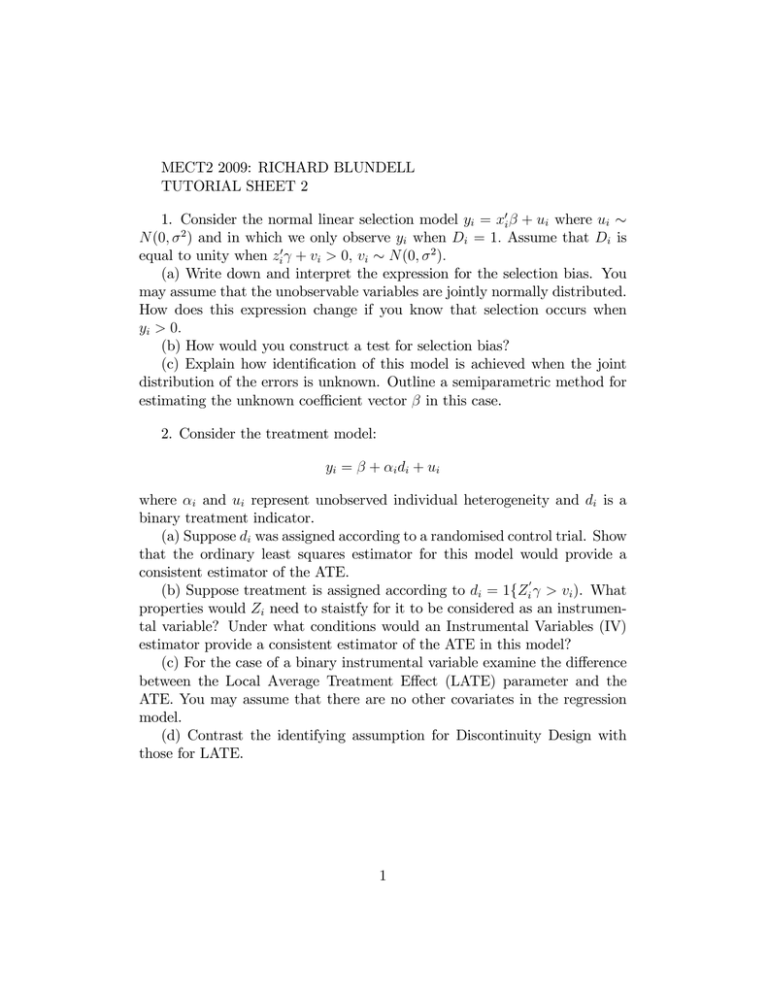
MECT2 2009: RICHARD BLUNDELL TUTORIAL SHEET 2 1. Consider the normal linear selection model yi = x0i + ui where ui N (0; 2 ) and in which we only observe yi when Di = 1: Assume that Di is equal to unity when zi0 + vi > 0; vi N (0; 2 ): (a) Write down and interpret the expression for the selection bias. You may assume that the unobservable variables are jointly normally distributed. How does this expression change if you know that selection occurs when yi > 0: (b) How would you construct a test for selection bias? (c) Explain how identi…cation of this model is achieved when the joint distribution of the errors is unknown. Outline a semiparametric method for estimating the unknown coe¢ cient vector in this case. 2. Consider the treatment model: yi = + i di + ui where i and ui represent unobserved individual heterogeneity and di is a binary treatment indicator. (a) Suppose di was assigned according to a randomised control trial. Show that the ordinary least squares estimator for this model would provide a consistent estimator of the ATE. 0 (b) Suppose treatment is assigned according to di = 1fZi > vi ). What properties would Zi need to staistfy for it to be considered as an instrumental variable? Under what conditions would an Instrumental Variables (IV) estimator provide a consistent estimator of the ATE in this model? (c) For the case of a binary instrumental variable examine the di¤erence between the Local Average Treatment E¤ect (LATE) parameter and the ATE. You may assume that there are no other covariates in the regression model. (d) Contrast the identifying assumption for Discontinuity Design with those for LATE. 1







